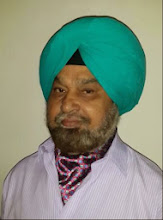A roundtable discussion was held on 30 May 2011 to discuss the two papers on the subject written by Anit Mukherjee, Research Fellow IDSA;
a. Failing to Deliver: Post Crises Defence Reforms in India, 1998-2010,
b. The Absent Dialogue: Civil-Military Relations and Military Effectiveness in India.
a. Failing to Deliver: Post Crises Defence Reforms in India, 1998-2010,
b. The Absent Dialogue: Civil-Military Relations and Military Effectiveness in India.
List of participants
General VP Malik (Retd), former Chief of Army Staff
Ajai Vikram Singh, former Defence Secretary
NS Sisodia, DG, IDSA
Air Marshal M Matheswaran, Air Headquarters
Air Marshal PK Mehra (Retd), Distinguished Fellow, CAPS
Vice Adm Pradeep Kaushiva (Retd), NMF
Maj Gen PS Sandhu (Retd), USI
Dr. Arvind Gupta, LBSC Chair, IDSA
Sqn Ldr PS Chhina (Retd), CAFHR, USI
Serving officers from the three service headquarters
Other members of IDSA.
His Excellency Shri NN Vohra, Governor of Jammu and Kashmir Presided.
The following important points in relation to Civil-Military Relations (CMR) got highlighted in the roundtable:
1. It was important to capture the weaknesses that accrue from the current problematic form of civil-military relations, observed one participant in the roundtable.
2. It was generally felt that debate on the CMR needs to move forward from the ‘bureaucracy versus the military’ towards one that encourages a respectful and well-informed dialogue between all the stakeholders in the system. Military education should instruct its officers to learn how the Government of India officials have to follow the rules of business. Moreover, the challenges and characteristics of Indian democracy and public-policy making and implementation should also be highlighted. In turn, there is a need to educate the civilian policy makers of the challenges and sacrifices made by the Indian military.
Our Comments:
1. It is a landmark decision of the IDSA to focus on the CMR and bring the issue in the public domain. Informed Citizens and Indian Think Tanks have an opportunity now to discuss the issue openly and dispassionately. Probably, lack of information & communication on the CMR; responsibilities and limitations of civil-military functioning within their charters; hardly any open debate(s) on the issue in setting of the Indian Democratic System involving all the stakeholders; our inability to see the CMR as an all inclusive issue, etc, are the issues that need to be addressed – the CMR are not limited to civil-military bureaucratic relations only as perceived by some.
2. We need regular monitoring of conduct of important ‘actors’ down up to District and Unit Levels who tend to derail the CMR . We can ill-afford to let the CMR be neglected any more; today's soldier is a vibrant part of the CMR in India.
Read the Proceedings: The Roundtable
General VP Malik (Retd), former Chief of Army Staff
Ajai Vikram Singh, former Defence Secretary
NS Sisodia, DG, IDSA
Air Marshal M Matheswaran, Air Headquarters
Air Marshal PK Mehra (Retd), Distinguished Fellow, CAPS
Vice Adm Pradeep Kaushiva (Retd), NMF
Maj Gen PS Sandhu (Retd), USI
Dr. Arvind Gupta, LBSC Chair, IDSA
Sqn Ldr PS Chhina (Retd), CAFHR, USI
Serving officers from the three service headquarters
Other members of IDSA.
His Excellency Shri NN Vohra, Governor of Jammu and Kashmir Presided.
The following important points in relation to Civil-Military Relations (CMR) got highlighted in the roundtable:
1. It was important to capture the weaknesses that accrue from the current problematic form of civil-military relations, observed one participant in the roundtable.
2. It was generally felt that debate on the CMR needs to move forward from the ‘bureaucracy versus the military’ towards one that encourages a respectful and well-informed dialogue between all the stakeholders in the system. Military education should instruct its officers to learn how the Government of India officials have to follow the rules of business. Moreover, the challenges and characteristics of Indian democracy and public-policy making and implementation should also be highlighted. In turn, there is a need to educate the civilian policy makers of the challenges and sacrifices made by the Indian military.
Our Comments:
1. It is a landmark decision of the IDSA to focus on the CMR and bring the issue in the public domain. Informed Citizens and Indian Think Tanks have an opportunity now to discuss the issue openly and dispassionately. Probably, lack of information & communication on the CMR; responsibilities and limitations of civil-military functioning within their charters; hardly any open debate(s) on the issue in setting of the Indian Democratic System involving all the stakeholders; our inability to see the CMR as an all inclusive issue, etc, are the issues that need to be addressed – the CMR are not limited to civil-military bureaucratic relations only as perceived by some.
2. We need regular monitoring of conduct of important ‘actors’ down up to District and Unit Levels who tend to derail the CMR . We can ill-afford to let the CMR be neglected any more; today's soldier is a vibrant part of the CMR in India.
Read the Proceedings: The Roundtable
Chairperson, SvipjaCMRChair.





